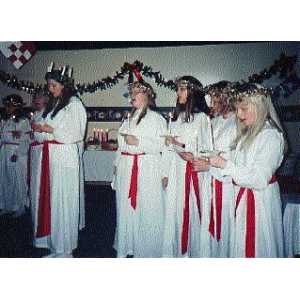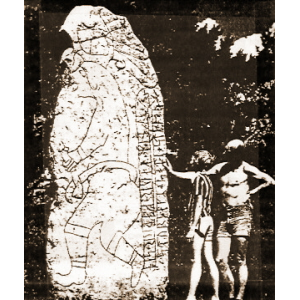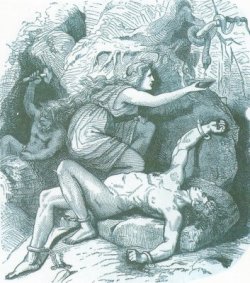 Yule or Yule-tide is a winter festival that was initially celebrated by the Historical Germanic Peoples as a pagan religious festival, though it was later absorbed into, and equated with, the Christian festival of Christmas. The festival was originally celebrated from late December to early January on a date determined by the lunar Germanic calendar. The festival was placed on December 25 when the Christian calendar (Julian calendar) was adopted. Some historians claim that the celebration is connected to the Wild Hunt or was influenced by Saturnalia, the Roman winter festival.
Yule or Yule-tide is a winter festival that was initially celebrated by the Historical Germanic Peoples as a pagan religious festival, though it was later absorbed into, and equated with, the Christian festival of Christmas. The festival was originally celebrated from late December to early January on a date determined by the lunar Germanic calendar. The festival was placed on December 25 when the Christian calendar (Julian calendar) was adopted. Some historians claim that the celebration is connected to the Wild Hunt or was influenced by Saturnalia, the Roman winter festival.
Terms with an etymological equivalent to “Yule” are still used in the Nordic Countries for the Christian Christmas, but also for other religious holidays of the season. In modern times this has gradually led to a more secular tradition under the same name as Christmas. Yule is also used to a lesser extent in English-speaking countries to refer to Christmas. Customs such as the Yule log, Yule goat, Yule boar, Yule singing, and others stem from Yule. In modern times, Yule is observed as a cultural festival and also with religious rites by some Christians and by some Neopagans.
As in many other countries in northern Europe Jultomten brings presents on julafton (“Yule Eve”), December 24, the day generally thought of as the main jul day. Many Swedes watch Kalle Anka och hans vanner (lit. Donald Duck and his friends), a compilation of Disney shorts broadcast at 3pm.
Almost all Swedish families celebrate with a julbord, which traditionally includes julskinka (baked ham), sill (pickled herring), janssons frestelse, and a Collection of meatballs, sausages, meats and pates. The julbord is traditionally served with beer, julmust, mumma (a mix of beer, liquor and svagdricka) and snaps. The dishes vary throughout the country. Businesses invite staff to a julbord dinner or lunch in preceding weeks, and people go privately to restaurants offering julbord during December. Swedes also enjoy glogg (mulled wine with raisins and almonds). Gifts are distributed either by Jultomten (usually from a sack) or from under the Christmas tree. In older days a julbock (yule goat, still used in Finland called Joulupukki) was an alternative to Jultomten; now it is used as an ornament, ranging in size from 10 cm to huge constructions like the Gavle goat. The following day some people attend a julotta and even more venture to the movies, as December 25 is a day of big premieres.
Free eBooks (Can Be Downloaded):
Walter Rowe - Mysterious Delusions Witchcraft In SalemKathryn Paulsen - Witches Potions And Spells
Barbara Obrist - Visualization In Medieval Alchemy
Phil Hine - Devotions And Demonesses


